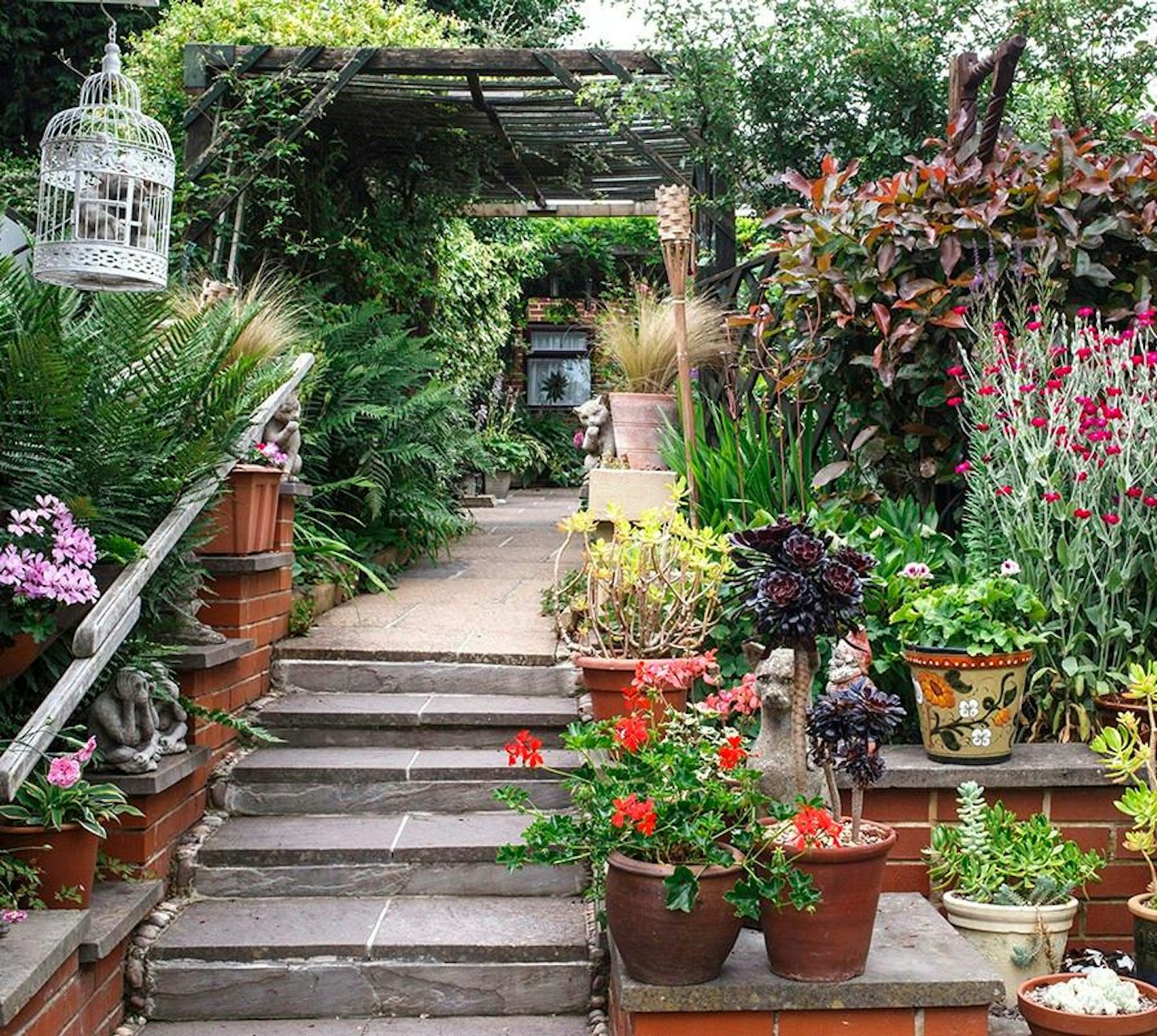
Whether you have a long driveway, a small front garden or just enough space for some pots, the entrance to your home and garden plays a key role in creating first impressions, raises your spirits when you're coming and going and provides a warm welcome for visitors.
Attractive front gardens make us feel good about where we live but they can also have a much more profound impact on our environment – reducing pollution, mitigating against flooding and increasing biodiversity, so it makes sense to make the most of these spaces.
A gate might seem like a purely functional structure, but once the practicalities have been considered, a gate can be another opportunity to add a touch of creativity to your garden. It can set the tone for what lies beyond, hinting at the planting and design. Full height, solid gates, for instance, work best set into a wall or tall hedge and will create a feeling of security and privacy. They can be particularly useful if you want to make an enclosed space and screen out an unsightly view or passing traffic. A solid gate can also be used to build a sense of anticipation until the big reveal as the gate opens – although this does mean there needs to be something on the other side that’s worthy of the build-up. Stumbling on the bike store and recycling boxes would be something of a let-down. Not everyone will have their curiosity aroused by this style of gate, though.
Adding an arch above a gate creates height and provides another planting opportunity if climbers are allowed to scramble over it. Once covered in a clematis or honeysuckle, the plant-clad arch will then offer an extra layer of privacy too. Or what about multiple arches or even a pergola? One of the prettiest entrances I have come across was a solid, duck egg-blue wooden gate that opened on to a path underneath a metal-framed tunnel that funnelled you towards the front door. This tunnel supported espaliered apples and pears, which were a mass of blossom in spring and dripping in fruit in autumn and were underplanted with a succession of spring bulbs and summer perennials that tumbled out over the path.
If possible, move wheelie bins, recycling boxes and bicycles to somewhere less obtrusive. If this isn’t possible or practical, hide them with simple storage solutions. A range of pre-built options are available, a local joiner could make something bespoke, or why not transform some wooden pallets with a spot of DIY? Adding a green roof to a bin or bike store will not only look good, it will attract wildlife too. Opt for tough plants such as sedums or sempervivums that have shallow roots.
Tying in your front door, gate (if you have one) and fences or other structures with one shade of paint will give your front garden a coherent look and a quick makeover. Think carefully about how the paint colour will fit in with the feel of the space overall. Black, grey or dark blue will form a striking backdrop to any flower or foliage hue, a bold colour such as red will need a pared-back planting of evergreens to avoid colour clashes, whereas a French grey or sage, with underlying tones of green, will complement pastel shades in particular.
When it comes to front garden planting, it makes sense to avoid plants with thorns or prickles that could scratch the skin or snag the clothing of passers-by. Lilies with their bright orange pollen that stains clothing are best planted elsewhere, as are euphorbias which produce a milky sap that can be a serious irritant to skin and eyes.
Formal planting with topiary and low hedging is a popular choice for front gardens, but don’t feel that you need to follow this style. My own front garden is on a typical suburban street but it has a woodland feel inspired by the woods and moorland that surround where I live.
Fragrance is a delightful way to be greeted. To fully appreciate scented plants you need to be able to enjoy them easily. Perfumed plants tucked away in a corner of the garden you rarely go to are a waste, but plant them near an entrance way that’s in regular use and every time you pass by you’ll get a fabulous waft that makes you and your visitors linger. Another option is to use plants with scented foliage such as lavender, scented-leaf pelargoniums and nepeta that will release their aroma when they’re brushed past.
If you don’t have space in your front garden to plant directly into soil then a cluster of containers will provide planting opportunities. Rather than lots of small pots, which can look cluttered and bitty, choose a couple of large containers at least 40cm in diameter. Not only will these make a bold statement, you’ll also need to water less frequently. Use a soil-based John Innes No. 3 compost that will release nutrients more slowly and over a longer period of time than a multi-purpose compost, then plant them with evergreen shrubs or grasses for year-round interest. Underplant with spring bulbs and add bedding plants or perennials around the sides for seasonal colour. Windowboxes and hanging baskets can be used to soften the front of a house and can be refreshed each season for exuberant colour.
A small tree or large shrub will give a front garden a focal point and provide a degree of privacy. It’s important to choose carefully though. Check the ultimate height and spread of the tree to make sure it won’t get too big and choose a tree with a light, delicate canopy such as an amelanchier or sorbus otherwise the tree will block light from your windows. If you don’t have space for a tree, tall ornamental grasses such as miscanthus or calamagrostis are good alternatives.
